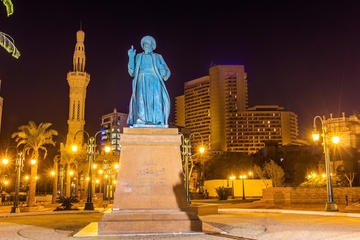Tahrir Square
TIME : 2016/2/22 10:41:48

Tahrir Square
Tahrir Square, a modest and central circular plaza in downtown Cairo, wasn’t on most tourists’ radar at all until January 2011. Though it has long been an epicenter of political change in the city, the 2011 demonstrations and protests brought the square global fame as hundreds of thousands of people covered the area over the course of several weeks, coalescing the Arab Spring movement in Egypt and ultimately leading to the ousting of former President Hosni Mubarak. Some 6,000 people were injured in clashes with police and security forces in the vicinity of the square and 846 were killed.
Though major tourist sites—including the popular Egyptian Museum of Antiquities—are located just off the square, Tahrir Square has since become a must-see Cairo site in its own right. Though there are no noteworthy monuments or structures, several small tourist booths have set up shop on the periphery, and people from around the world come to pay homage to this site of modern change; the square also continues to be a site for political activity and public gatherings. If you wander the streets spinning off the square, it’s also possible to see murals and street art from 2011 to the present day depicting different facets of revolutionary sentiment.
Practical Info
Traffic around Tahrir is thick—but many taxis and busses will pass through the area on the way to other points in the city. Several organized tours of the Egyptian Museum of Antiquities also include stops and commentary on Tahrir Square. To truly appreciate the significance of this otherwise unexciting patch of land, a tour with a knowledgeable guide is highly recommended, although if protests are taking place, it may be best to steer clear for safety reasons.
